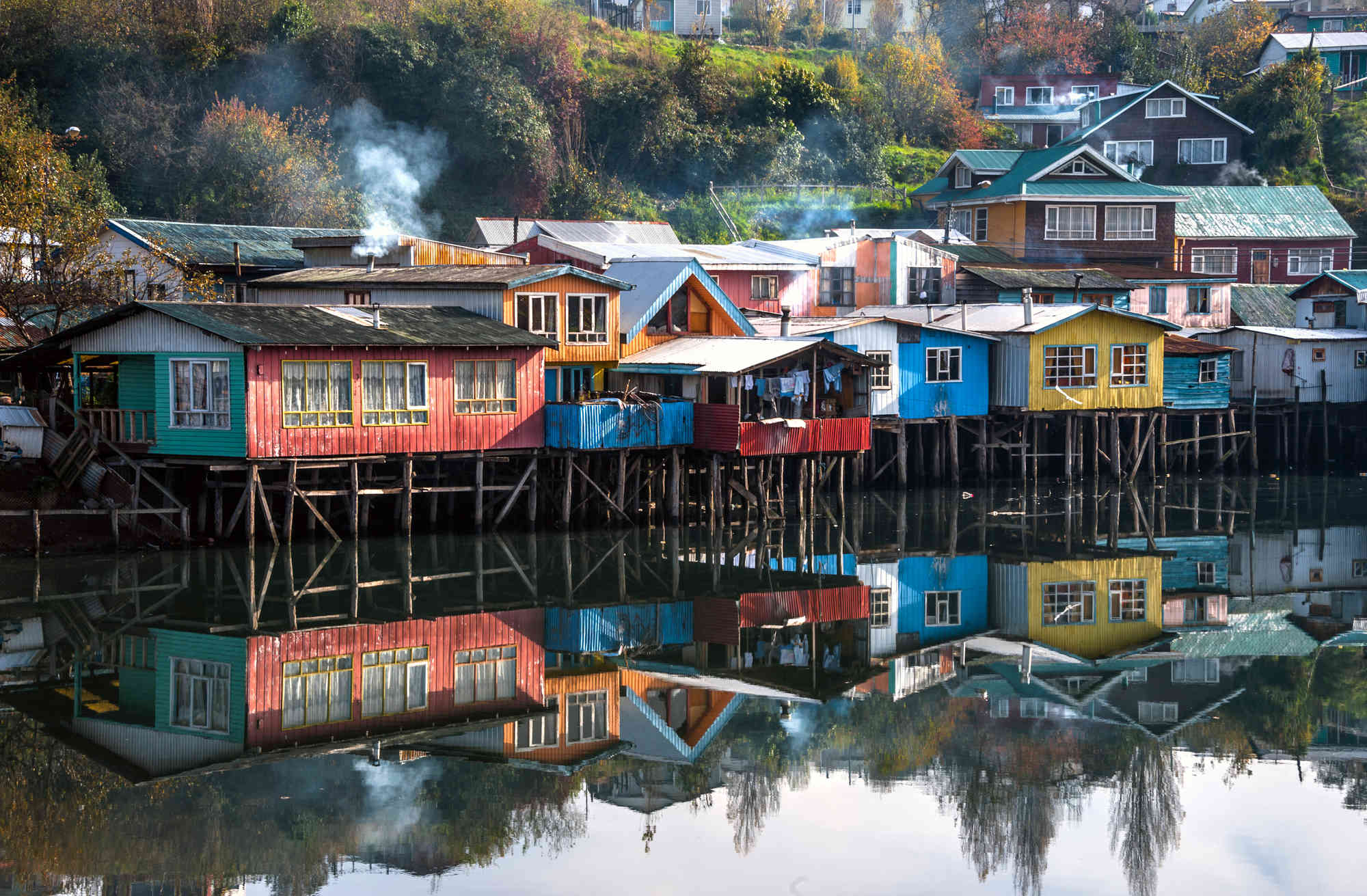One of the first points of attraction of Chiloé is the colorful palafitos, and it is the village Castro that travelers have to go to admire these beautiful colorful houses on stilts. Initially, these houses were built for trade, and now, their atypical side attracts many curious tourists. The wooden churches also have a charm ►
One of the first points of attraction of Chiloé is the colorful palafitos, and it is the village Castro that travelers have to go to admire these beautiful colorful houses on stilts. Initially, these houses were built for trade, and now, their atypical side attracts many curious tourists. The wooden churches also have a charm that seduces many people. What makes them so impressive is the Chilota architecture and the multiple color combinations that provide a reference for fishermen at sea. Moreover, on the island of Chiloé, 16 of these incredible churches are classified as UNESCO World Heritage Sites. Gourmets can be seduced by one of Chiloé's traditional dishes, such as curanto, and to immerse themselves even more in the tradition of the locals, it will be advisable to participate in a minga de ti radura de casas. Much more than a simple tradition, it is an art of living transcribed by a promise made to a Chilote in return for his help. Nature lovers can meet the penguins at the Monumento Natural Islotes site in Punihuil, not far from Ancud. These three islets protect Magallan and Humboldt penguins from extinction. Those who wish to bring some souvenirs can go to the Dalcahue, Achao, Ancud, and Castro markets to find crafts such as sweaters, hats, and wool socks woven by hand with alpaca wool. Ponchos and jewelry are also handmade. Then, great hikers at heart will go to Chiloé National Park for a trek in the evergreen forest. An impressive variety of wildlife, including foxes, pudu, and nearly 110 species of birds, find refuge here. Another activity not to be missed is kayaking around the archipelago, which will give travelers an overview of the different islands. ◄
